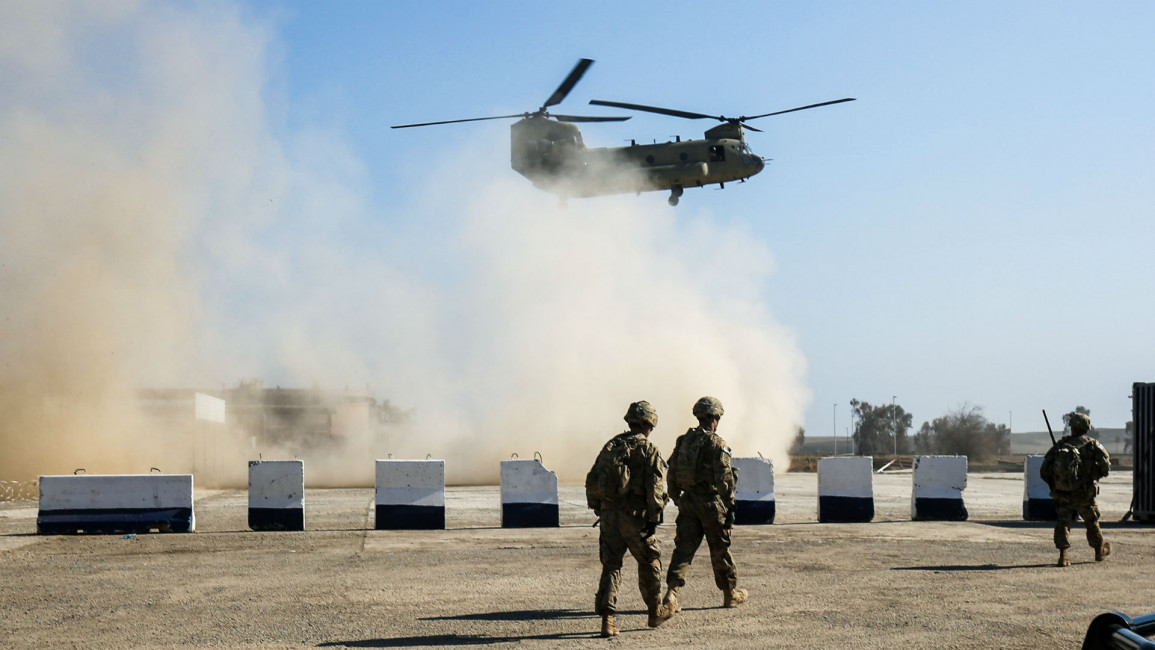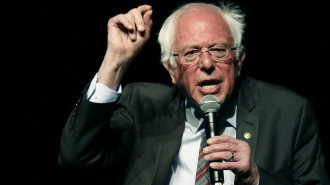US-led coalition forces deployed at K-1 base in Kirkuk as ISIS resurfaces: Kurdish sources
An armed force from the US-led international coalition against ISIS has been deployed at the K-1 military base in Kirkuk, a well-informed Kurdish source disclosed to The New Arab.
This marks the first such deployment since 2020 when the US withdrew its forces from the base situated 16 kilometres from the centre of Kirkuk.
Speaking to TNA on condition of anonymity, the source said, "The force, comprising about 40 soldiers and 10 to 15 US-made armoured Hummer vehicles, was sent from Erbil and deployed at the K-1 military base."
TNA reached out to the global coalition for comment, but they did not respond by the time this report was published.
While the exact purpose of the deployment remains unclear, the source suggested that it is likely a protective measure against increasing ISIS activities in the disputed province between the Iraqi government and the Kurdistan Regional Government (KRG) in Erbil.
Another source, also speaking on condition of secrecy, noted that ISIS has recently resumed its insurgency in and around the Diyala province.
The K-1 base hosted coalition forces since 2017 as a launching pad for operations against ISIS in the nearby mountainous areas. The regions south of Kirkuk and north of the neighbouring provinces of Diyala, Salahaddin, and Nineveh continue to be hotbeds of ISIS activity.
The disputed territory between the federal Iraqi government and the autonomous Kurdish region has created security gaps that benefit ISIS militants. The coalition's presence has occasionally served as a mediating force between the two competing authorities.
Recently, the Iraqi government and the KRG agreed to establish joint operations rooms to protect these gap areas jointly. Sources have informed local Kurdish media that coalition forces will participate in these joint operations rooms.
Another potential purpose of the deployment could be to preserve political stability in the province amid efforts to elect a new governor for Kirkuk. Iraqi Prime Minister Mohammed Shia' al-Sudani has set a deadline of 11 August for the Arab, Kurdish, and Turkmen communities to reach a compromise to elect a new governor and head of Kirkuk's Provincial Council following months of political disputes over power-sharing.
A well-informed source from Kirkuk told TNA that there are currently no agreements among the three main stakeholders on distributing the posts. The source added that the situation in Kirkuk is dire, with an administrative vacuum as no one can sign formal documents after the acting governor, Rakan Saed al-Juburi, was sworn in as a member of the KPC.
Additionally, Iraq recently signed a memorandum of understanding with British Petroleum (BP) to enhance the development of oil fields in Kirkuk, aiming to boost investment and production in the region. The agreement, overseen by Prime Minister al-Sudani and signed on 1 August 2024, involves rehabilitating and developing major oil fields, including Baba, Avana, Bay Hassan, Jambur, and Khabaz.
The coalition force's tasks might also include protecting BP operations in the province.
In late March 2020, the US-led coalition withdrew from the K-1 base following a rocket attack in December 2019 that killed an American contractor, leading to a series of tit-for-tat attacks between the US and Iran-backed Iraqi militia groups. These attacks culminated in the US-directed killing of top Iranian general Qasem Soleimani and senior Iraqi militia leader Abu Mahdi al-Muhandis on 3 January 2020.




 Follow the Middle East's top stories in English at The New Arab on Google News
Follow the Middle East's top stories in English at The New Arab on Google News
![The US vetoed a UN Security Council (UNSC) resolution demanding a ceasefire in Gaza [Getty]](/sites/default/files/styles/image_330x185/public/2185152251.jpeg?h=7ef8ac04&itok=RpLSj2pu)

![An attack by paramilitary forces in Sudan has killed at least 40 people [Getty]](/sites/default/files/styles/image_330x185/public/2182364341.jpeg?h=a5f2f23a&itok=r8Fkhxdj)